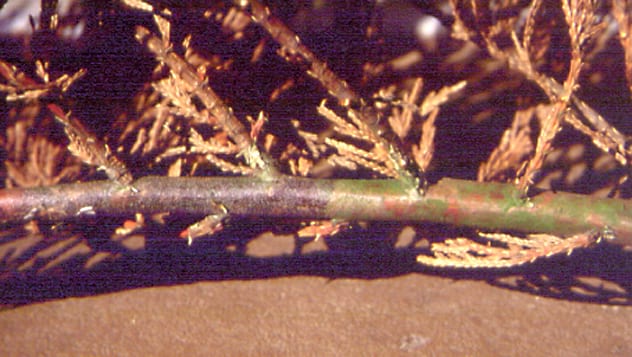Seridium cardinale
As with Monterey cypress, disease development on Leyland cypress has been closely tied with hot, dry summer weather.
This disease has also emerged across the Southeast as a common and damaging disease in landscape plantings and on Christmas tree plantations. As was the case with Monterey cypress, disease development on Leyland cypress has been closely tied with hot, dry summer weather. Two other species of Seridium, S. unicornie and S. cupressi, are also known to cause canker diseases in juniper and cypress.
The most noticeable symptom of Seridium canker is yellowing or browning of the foliage on one or more top or lateral branches. This discoloration may appear at any time of the year but is most likely to be seen in the spring. Disease development often continues until a considerable portion of the tree is killed.
Girdling cankers form on the twigs, the scaffold branches, and the main trunk, and then the foliage dies.
The spores are spread to healthy foliage and branches of adjacent Leyland cypress by splashing water and contaminated pruning tools.


